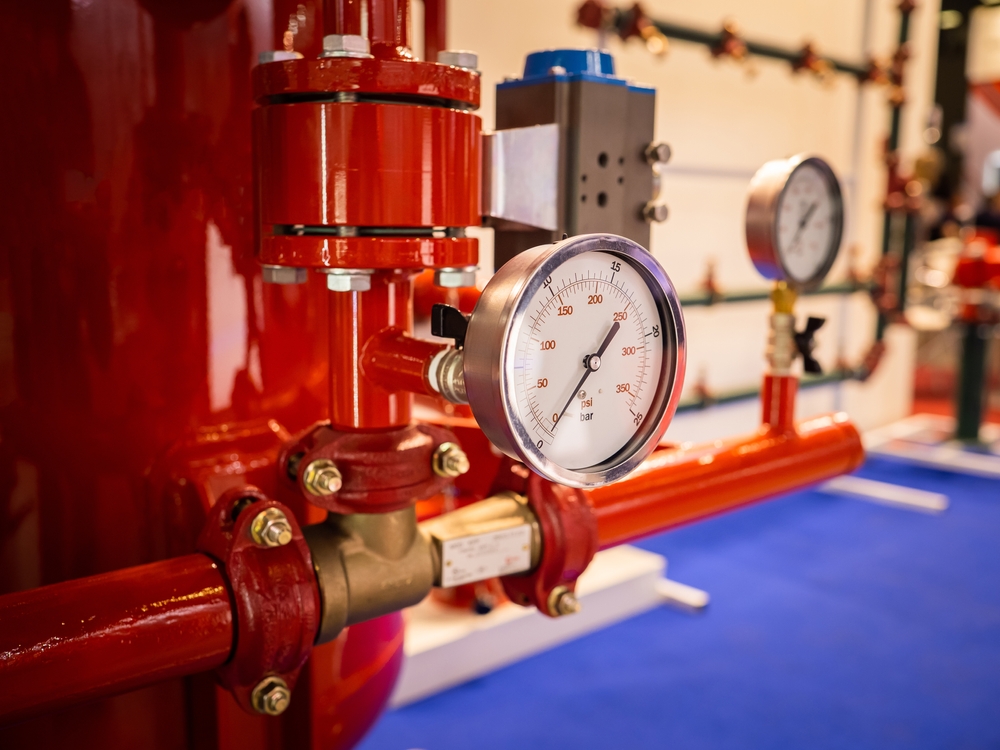Seattle Shaft Pressurization and High Rise Sequence Testing

One of the biggest causes of fire-related injuries and deaths is smoke inhalation. This occurs when building inhabitants need extended time to evacuate a building during a fire. At Pacific Fire & Security, our fire technicians often see this happen in high-rise buildings, where it is difficult to quickly escape through the many different levels.
Because of how deadly fire smoke is, building owners must implement and maintain the proper fire smoke control and pressurization systems. Ensuring that your buildings evacuation route remains smoke-free is essential for the following reasons:
- Allows fire responders time to rescue elderly, disabled, or high-risk occupants from the Areas of Refuge or other parts of your building.
- Creates a safe escape route for building occupants and firefighters.
- It helps people avoid smoke inhalation and other life-threatening smoke-related injuries.
To help create a smoke-free escape route for your building inhabitants, shaft pressurization and high-rise sequence testing are essential fire safety practices. The Pacific Fire & Security teams are here to carry out your annual sequence and shaft pressurization testing, helping you prepare for a fire emergency.
Shaft Pressurization Testing in Seattle
Stairway pressurization is paramount to any commercial building’s fire protection system, helping keep evacuation routes smoke-free. During a fire, smoke begins to infiltrate a building’s stairway when it loses pressure as people open and close its doors during evacuation. By engaging in stairway pressurization testing, you can obtain the optimal air pressure that keeps smoke out and people safe.
Contact Pacific Fire & Security to discuss how we can help with your shaft pressurization needs in the Greater Seattle Area!
High Rise Sequence Testing in Seattle
Local Washing State state jurisdictions and NFPA fire codes require yearly high-rise sequence testing for buildings over 75 feet. This sequence test involves a full-scale inspection of your building’s fire and life safety systems.
During your high-rise sequence testing, our fire technicians go through a thorough checklist, inspecting the following:
- Emergency and exit lights
- Fire alarm system and controls
- Fire sprinkler system
- Fire extinguishers
- Smoke detectors and smoke control system
- Exit door locks
- Emergency and exit lights
- Fire alarm system and controls
- Fire sprinkler system
- Fire extinguishers
- Smoke detectors and smoke control system
- Exit door locks
Shaft Pressurization and High Rise Sequence Testing FAQ
What is a high rise sequence test?
A sequence test is a comprehensive test and inspection of your high-rise building’s entire fire and life systems. It is required annually, and a certified fire technician must perform your test.
How do I know if my building needs a sequence test?
Your building must have annual sequence testing if your building is at a minimum of 75 feet in height.
How often should I have high-rise sequence testing?
At Pacific Fire & Security, we perform high-rise sequence testing simultaneously with your annual shaft pressurization, smoke control testing, and all other fire inspections and maintenance services. This ensures that you meet every local and NFPA requirement yearly.
What is a stairway pressurization test?
A stairway pressurization test is a confidence test of your building’s air pressure, air change rates, and doorway pull forces. It tests and verifies that your stairway’s air pressurization levels meet set code requirements.
What is the purpose of stairway pressurization?
Stairway pressurization is a way to ensure your building’s stairwell does not fill with smoke during the event of a fire. When your stairway is pressurized, it prevents smoke and heat from infiltrating through the doors, constantly opening and closing. This difference in air pressure ensures that your building occupants can exit without risking life-threatening smoke-related injuries.
Is fire smoke dangerous?
Yes, inhaling fire smoke is actually the leading cause of all fire-related deaths. It is highly toxic as it contains carbon monoxide and hydrogen cyanide. In conjunction with extreme heat levels, these chemicals can result in fatigue, loss of consciousness, asphyxiation, organ failure, lung damage, and brain damage.


